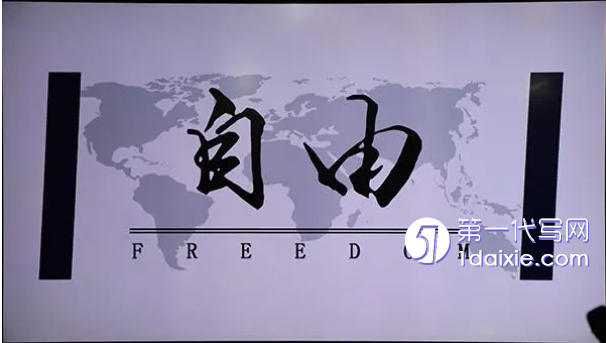本文是一篇英语论文,本文选择从弗兰岑独特的叙事聚焦部署的角度来探讨唯一的女性主人公帕蒂,并将帕蒂的成长之旅从诱捕、流离失所到最后的启蒙,揭示现代女性面临的自由悖论和后女权主义困惑的某些问题。
CHAPTER ONE INTRODUCTION
1.1 Jonathan Franzen and Freedom
With the publication of his fourth novel Freedom, Jonathan Franzen has occupied the cover of Time magazine as the most ambitious American novelist of his generation with the title “the Great American Novelist”, haloing him to be the first American writer on Time’s cover since Stephen King, many years before. Not only as a work of sober literary (high art) achievement that has been enlisted into the American canon, Freedom also proves to be a great commercial success as it debuted on the Times’ fiction bestseller list on September 19 at number one, just one month after its release. Franzen’s success with his two masterpieces Freedom (2010) and The Corrections (2001) as the two are similar in style proves his writing philosophy works in contemporary 21st century.

His first two works The Twenty-Seventh City (1988) and Strong Motion (1992) which are widely regarded as postmodernist novels, are neither a financial success, nor a great literary achievement. Franzen ushers his turning point with the masterpiece The Corrections (2001) and later Freedom (2010) in which he transforms his writing style into realism or “tragic realism” (Harper’s 35) and fully demonstrates his gift for combining depth and vividness of character with breadth of social vision. Simply put, the affective and alluring power of the two works originates from the way Franzen manages to marry pyrotechnic literary ambitions to an immersive, highly readable family saga, and his intense focus on and his genius in shaping compelling characters. It is a strategy Franzen has famously argued in the 1996 essay in Harper’s Magazine: In the fast-approaching 21st century the popularity of TV drama, the visual art is making readers unadaptable to the serious post-modern writings.
1.2 Literature Review
Freedom has received general acclaim from book critics and has been studied and analyzed extensively.
What draws critics’ attention widely is its stylistic features as Franzen writings shift from postmodernist literary tradition to a more traditional realistic approach. Burn (2009) links Franzen’s gradual return to a more traditional realistic writing style to the cultural period called “the end of postmodernism” at the turn of a new millennium. Dawson (2013) categorizes his new way of writing to the post-postmodernist tendencies and defines it as “post-postmodernism”, a way to reassert fiction’s authority in modern culture with the deployment of certain realistic narrative technique. Gram (2014) examines the post-postmodern characteristic as the style of “Lukácsian realism” for the novel’s representation of global capitalism, environmental degradation, and technological crises in a way of “no organic connection” (303). Franzen (2010) himself categorizes his novels to be akin to “tragic realism” which employs the postmodern complex narrative patterns like metafiction, pastiche, intertextuality and irony, yet, is to celebrate a new version of realism. Although varying on what critics define it, Franzen’s distinctive writing style of mixing the postmodernism and realism has been hailed as a new realism to connect individual travails to the broad contemporary context, a way of being much more entertaining and engaging while still shedding light on modern social ills.
CHAPTER TWO EXTERNAL FOCALIZATION: PATTY’S ENTRAPMENT
2.1 External Focalization: Ramsay Hill Community
Genette (1980) introduces the term focalization which means “the focus of narration” as a replacement for “perspective” or “point of view” to distinguish between who speaks (voice) and who sees (eye) (186). And Genette distinguishes three types or degrees of focalization -- zero, internal and external in terms of “the selection or restriction on narrative information” (188). Though there are controversies over the categorization of focalization with regard to the standard of measuring narrative information, most of the critics like Niederhoff (2001) think of focalization as “a selection of or a focus on a particular region of the story world--in this case, the mind of the protagonists” instead of “regarding this mind as a kind of window through or from which the world is perceived” (118). Although Bal (1997) proposes another typology of Genette’s theory of focalization, she also agrees that the categorization of focalization “has nothing to do with the subject that ‘sees’ but with the object that is ‘seen’”. In terms of external focalization, it is “actions and appearances of the protagonists that have been seen” (25, 29). To talk about character as focalizer (the subjects that see) is to confuse focalization and perception. Niederhoff also explains the reason for the consciousness of the standard when categorizing focalization:
Characters can see and hear, but they can hardly focalize a narrative of whose existence they are not aware. This leaves us with the narrator (or the author?) as the only focalizer, an inference whose interest is primarily scholastic. If all the different focalization options can be attributed to one agent, this attribution does not provide us with any conceptual tools that we can use in distinguishing and analyzing texts. (Niederhoff, 2001: 12)
2.2 Patty as Focalized: Incongruity in Patty’s Characterization
In previous part, how the Berglunds are external focalized has been analyzed. This part is going to explicate what the Berglunds are like in the neighbors’ views especially Patty for Patty is the one who occupies the center of its focalized narrative and incongruity in Patty’s characterization can be easily sensed by readers.
The first unusual point is that while the novel initiates from the character Walter, the focusing point actually lies in Patty, Patty is the one who has been constantly focalized. The novel begins with Walter’s former neighbors read a “very unflattering” report about him in the New York Times and their comments that “there had always been something not quite right with the Berglunds” (Freedom 2). Yet, in the next paragraph their recalling somewhat turns to his wife Patty Berglund right away and the main content of this part revolves around Patty who is “helplessly conspicuous” from her first day in the neighborhood (3).
Franzen not only directly informs readers of Patty’s conspicuousness in the neighborhood, but also hints Patty’s “helplessly conspicuous” status in the whole narrative of the neighbors’ focalization as the following passage all revolves around her and all other characters are introduced by Patty’s relationships and interaction with them. It is not until very later that Walter has been detailed introduced in terms of his appearance, his jobs, and his features, which, yet, only occupies one paragraph.
CHAPTER THREE ZERO FOCALIZATION: PATTY’S DISPLACEMENT .............................. 27
3.1 Zero Focalization: Omniscient Narrator .................................... 28
3.2 Patty in Male’s Storytelling: Patty as A Burden .............................. 32
CHAPTER FOUR INTERNAL FOCALIZATION: PATTY’S ENGLIGHTENMNET ................ 43
4.1 Reframing of Metafictional Elements: Patty’s Construction of Reality ...................................... 44
4.2 Internal Focalization: Dual Identity .................................. 47
CHAPTER FIVE CONCLUSION ......................................... 59
CHAPTER FOUR INTERNAL FOCALIZATION: PATTY’S ENGLIGHTENMNET
4.1 Reframing of Metafictional Elements: Patty’s Construction of Reality
In his very first two novels, The Twenty Seven City (1988) and Strong Motion (1992), Franzen attempts to align himself with postmodernist literary traditions and the works are more of postmodern style and content (Phelan, 2013; 239). While in his subsequent novels, The Corrections (2001) and Freedom (2010), Franzen returns to a more realistic approach by using omniscient narrative and portraying a well-recognized world along with ordinary characters. Yet, postmodernism markers like metafictional and intertextual devices, fragmented narrative of temporal and spatial chaos and disorder, indeterminacy etc in Freedom can still be recognized as quite a few critics have managed to interpret these two novels in the context of postmodernism (Hassan, 2015: 15). This distinctive writing style coincides with the cultural period called “the end of postmodernism--a perceived dead end that has been reached because of postmodernism’s detachment from the social world and immersion in a world of nonreferential language” (McLaughlin, 2004: 55), or a more widely used technical term “post post-modernism”. For post-postmodern fiction, the application of postmodernist writing techniques is more to integrate authentic events and relevant issues, shape real-life characters with a consciousness that expresses perceptions and seeks a meaningful existence, draw connections between the narrator, reader, and reality, and to bridge the gap between the text and reality based on the aesthetics of trust and reality (Aljadaani & Al-Sharqi, 2021: 299). Here, in Patty’s autobiography, the metafictional elements have been reframed to draw readers nearer to Patty who has got the plausible likenesses of every ordinary folk next door, explore various levels of subjectivity manifested in Patty and also to demonstrate Patty’s conscious construction of reality.

CHAPTER FIVE CONCLUSION
As a “wide shot, all-embracing, way-we-live-now novel”, Freedom depicts a panorama of the American society by presenting a family saga of a typical white family, the Berglund’s. Intentionally naming the novel with a big word “freedom”, Franzen purports to use the term “freedom” in multiple contexts and with multiple tones throughout the novel, wringing changes on it in order to explore its various nuances, thus mirroring and reflecting all-encompassing American contemporary social issues. His way of achieving this ambitious goal is to “connect the personal and the social by rooting social critique in psychologically compelling characters”. There are so many wonderfully complex characters in Franzen’s Freedom, like Walter, Richard, and Joey as the part “2004” centers around the male consciousness. Yet, approached from the narrative focalization, it can be identified that at its core, Freedom is Patty Berglund’s story, because the story initiates with Patty’s debut as a carrier to social pollen from the external focalization of neighbors and ends with Patty’s returning to her former role. More than that, a great deal of the text is Patty’s own autobiographical memoir with the means of internal focalization. And the zero focalization of omniscient narrator never leaves its attention on Patty, too.
reference(omitted)
